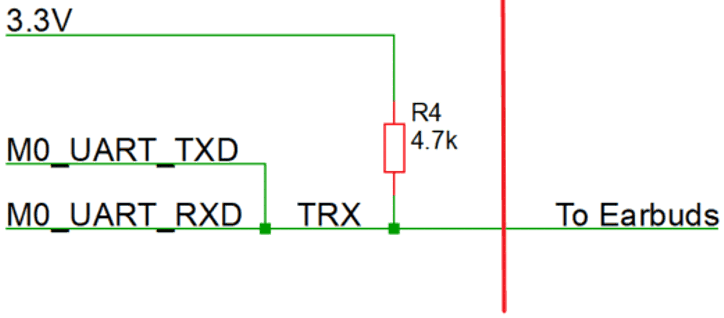SLAAEF8 January 2024 MSPM0L1105 , MSPM0L1105
3.1 Background
Standard UART devices use receive (RXD) and transmit (TXD) connections to establish separate paths for sending and receiving data between multiple devices, hence at least two wires are used in a standard UART communication, see Figure 3-1.
 Figure 3-1 Standard UART
Communication
Figure 3-1 Standard UART
CommunicationA single-wire UART is a variation of the standard UART protocol that uses only one wire for both transmitting and receiving data. This can be useful in applications where the number of available pins is limited, like in the TWS application. As shown in Figure 3-2, with TXD and RXD on each device physically combined, two devices can communicate using only one physical wire.
 Figure 3-2 Single-Wire UART
Communication
Figure 3-2 Single-Wire UART
CommunicationFigure 3-3 references single wire UART based on MSPM0.
 Figure 3-3 Reference Single Wire UART
Design Based on MSPM0
Figure 3-3 Reference Single Wire UART
Design Based on MSPM0In Figure 3-3, the M0_UART_T/RXD connects to the I/Os of MSPM0 that support the UART peripheral. MSPM0L series supports two individual UART modules, meaning the left and right earbuds can communicate with the TWS case simultaneously, if needed. Unlike standard UART TXD I/O that has a push-pull structure, in this application, the UART TXD I/O structure needs to be open-drain to achieve the wired-AND logic. A pull-up resistor and 3.3V power rail provide the logic high voltage. RXD is high-Z by default, and when TXD is high-Z, the earbuds will sense high (3.3V), when TXD is GND, the earbuds will sense low (0V).